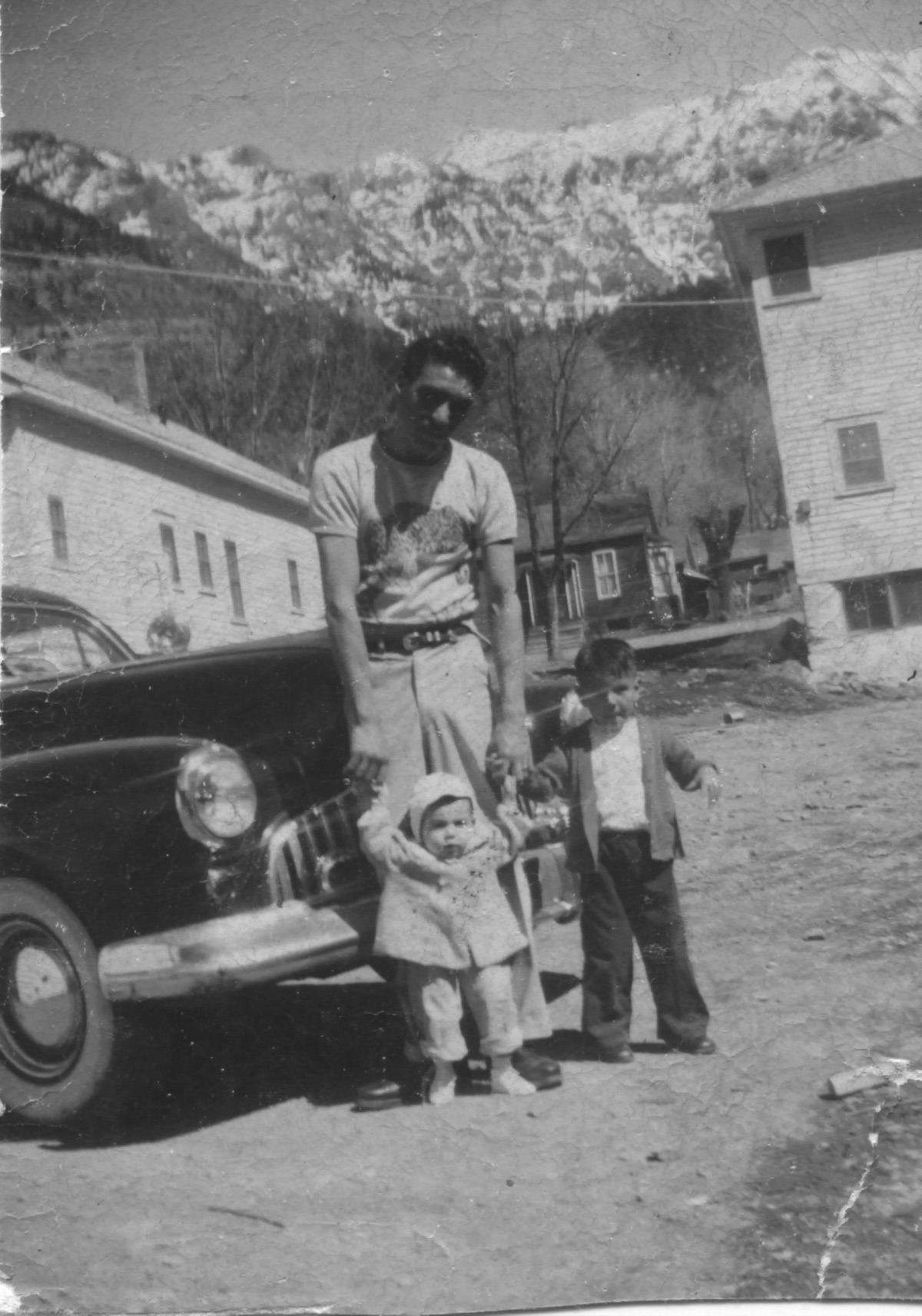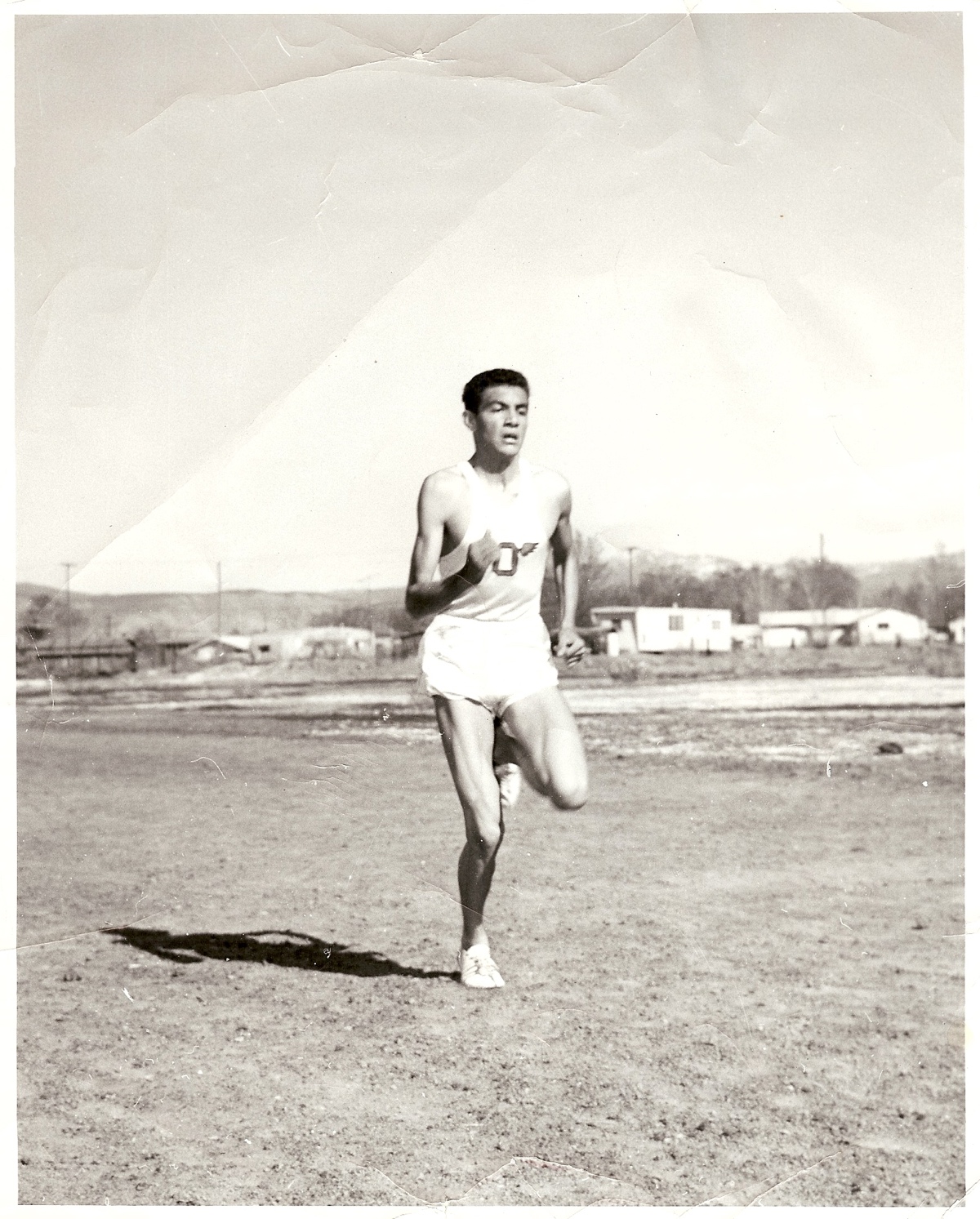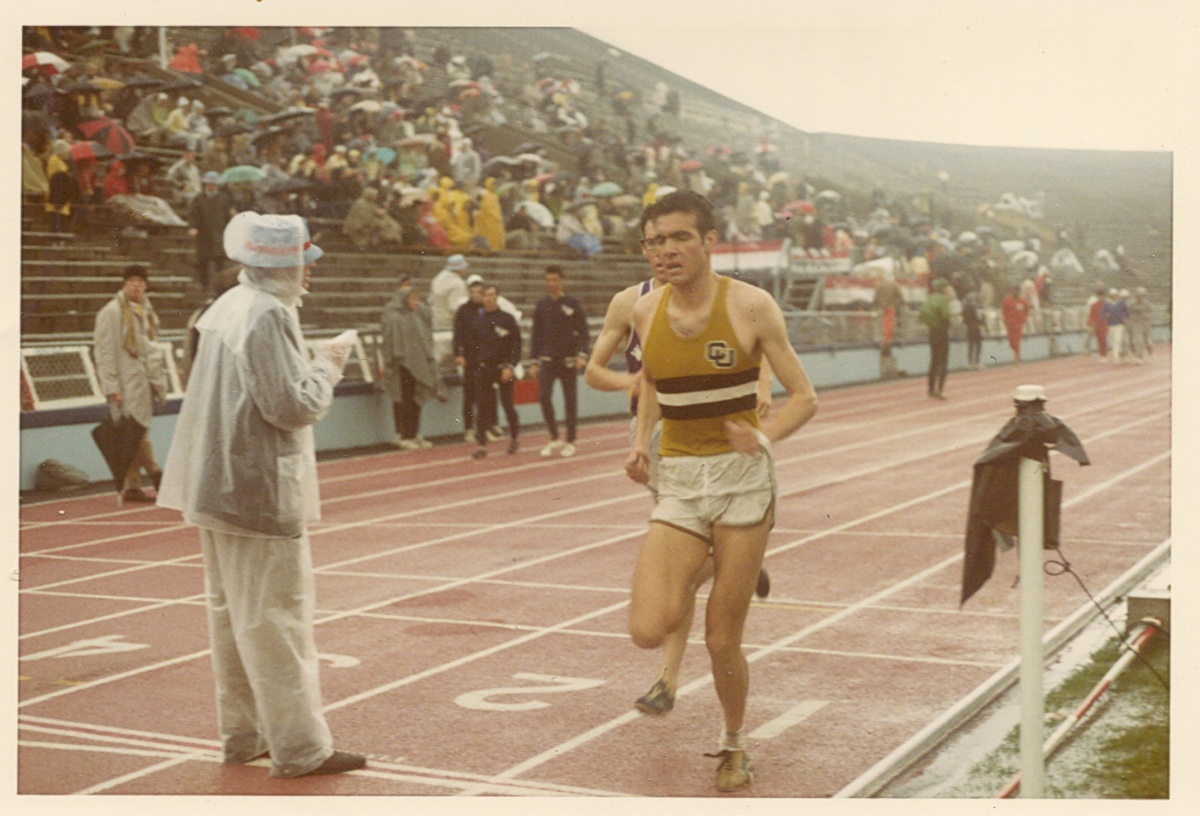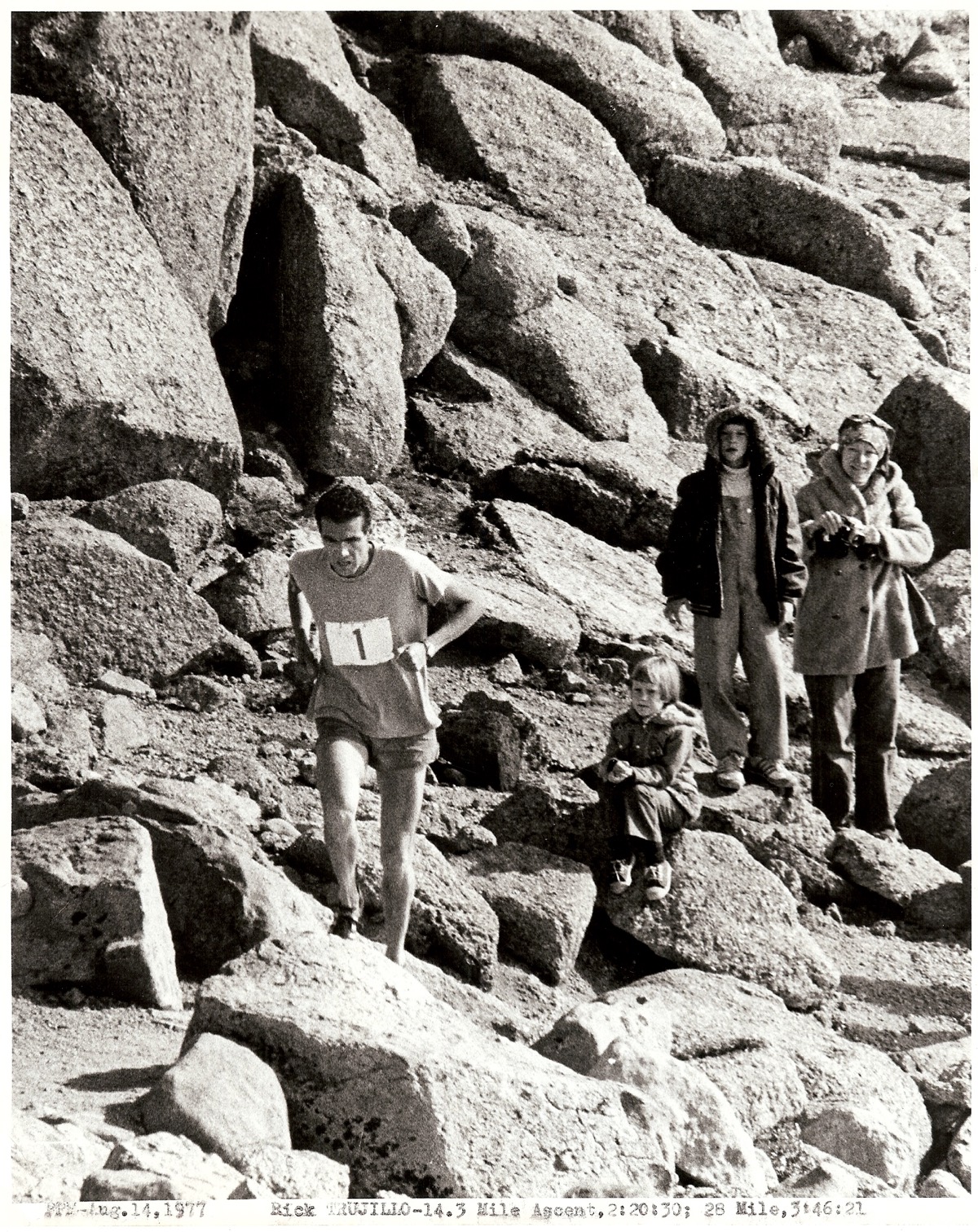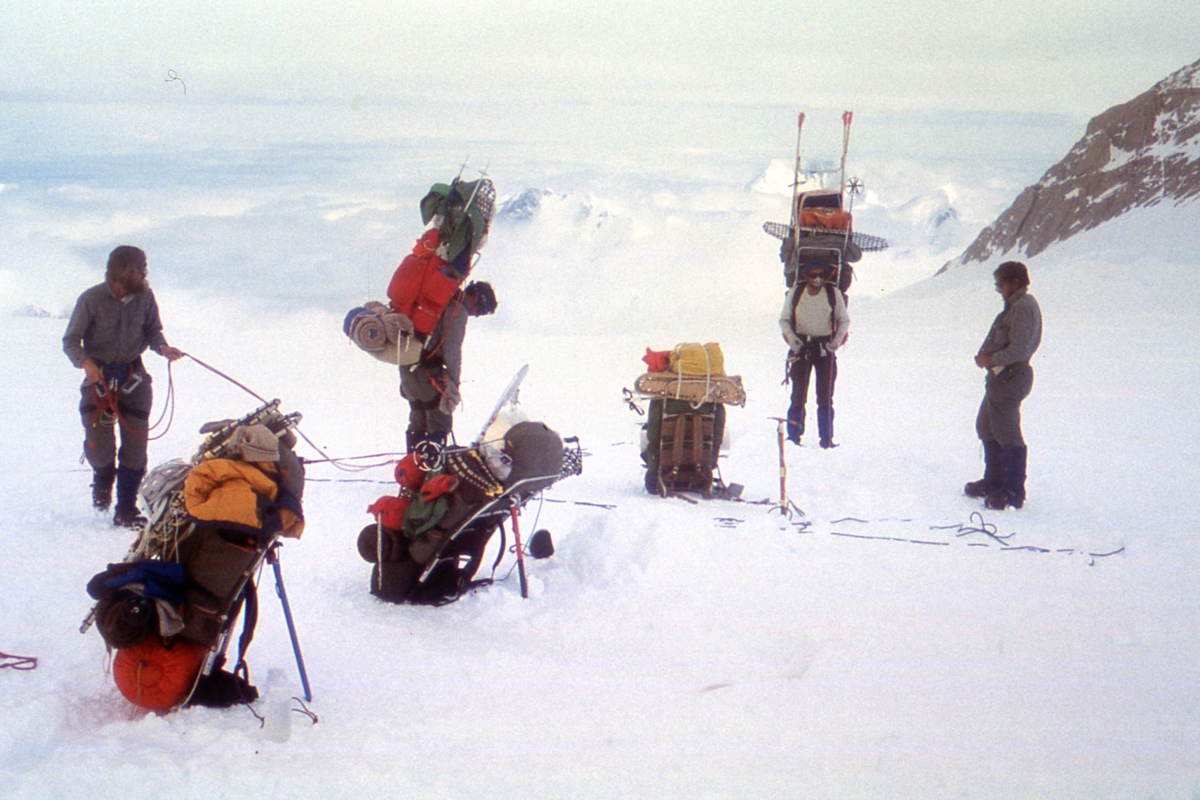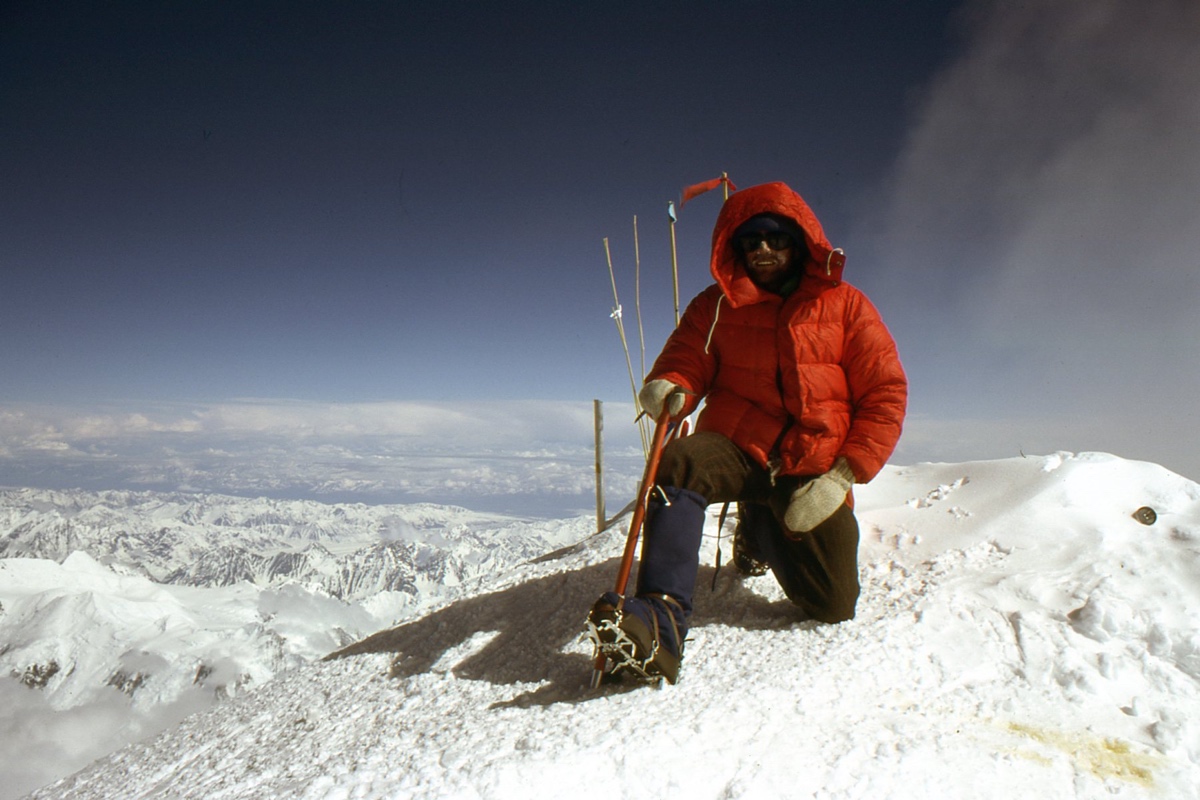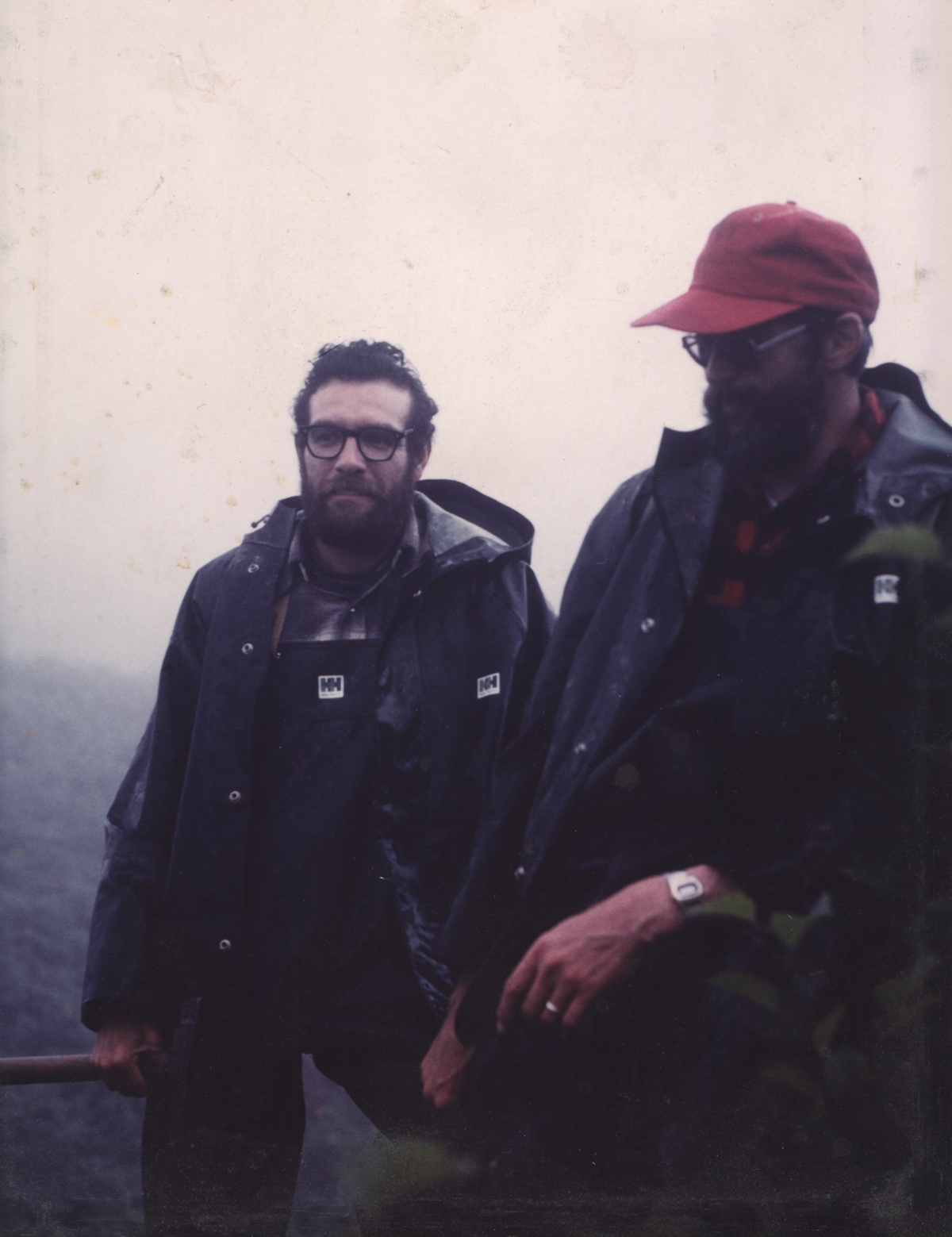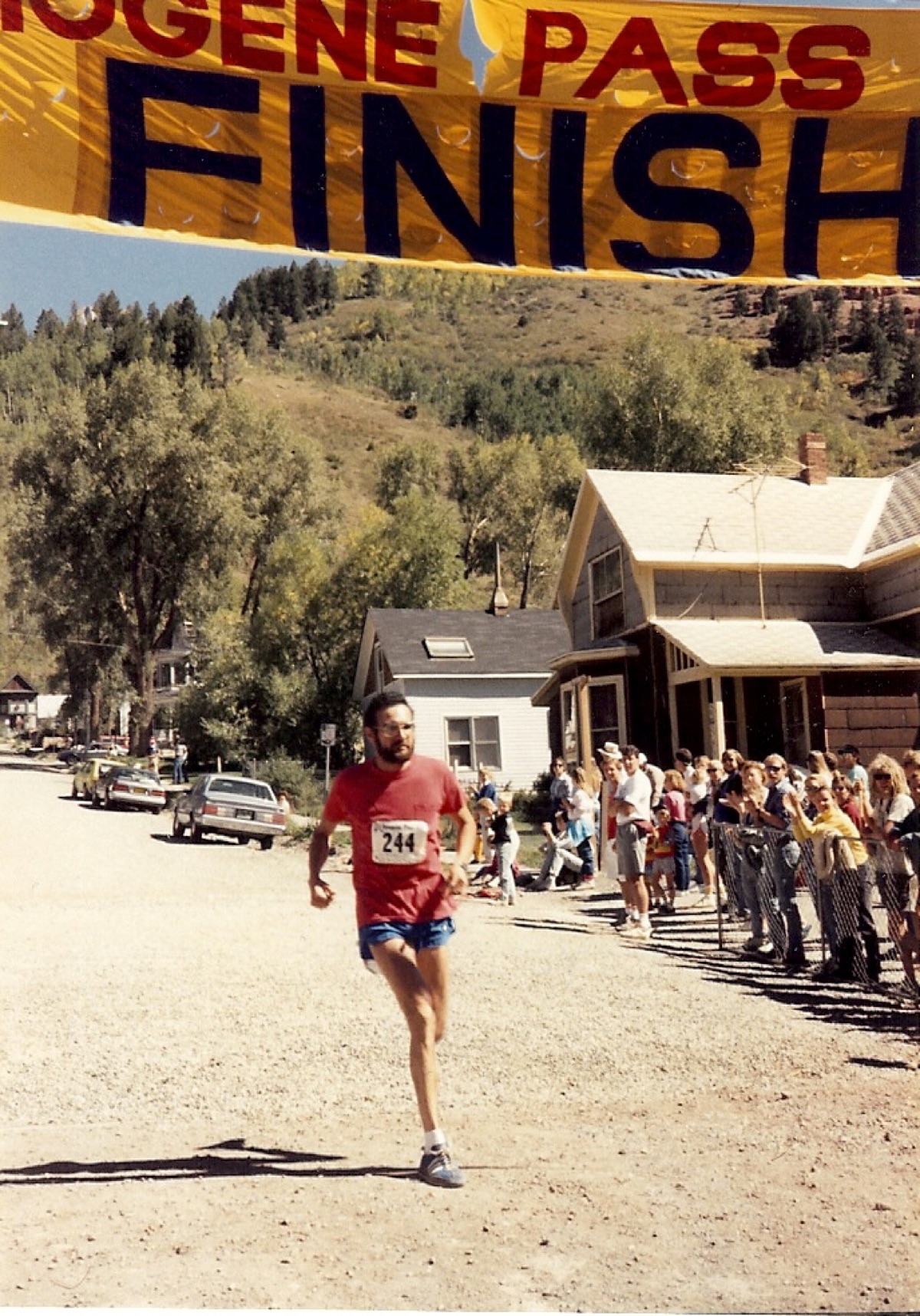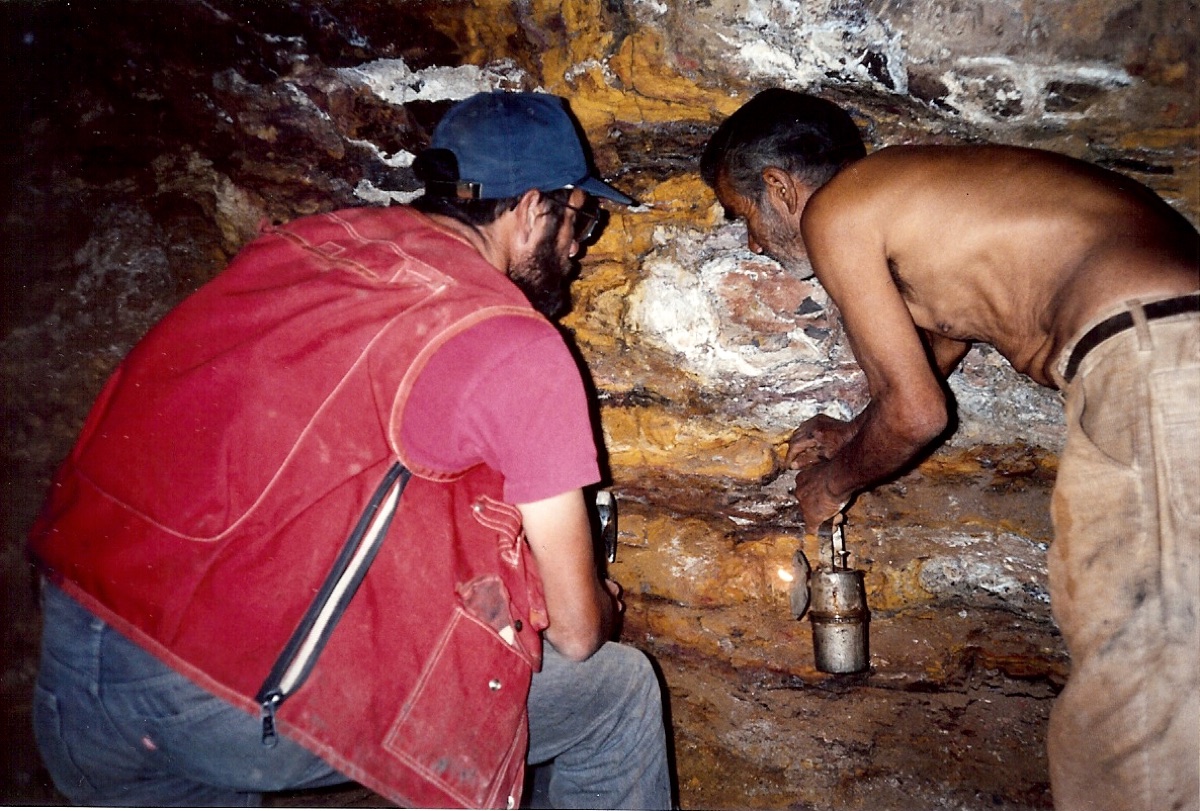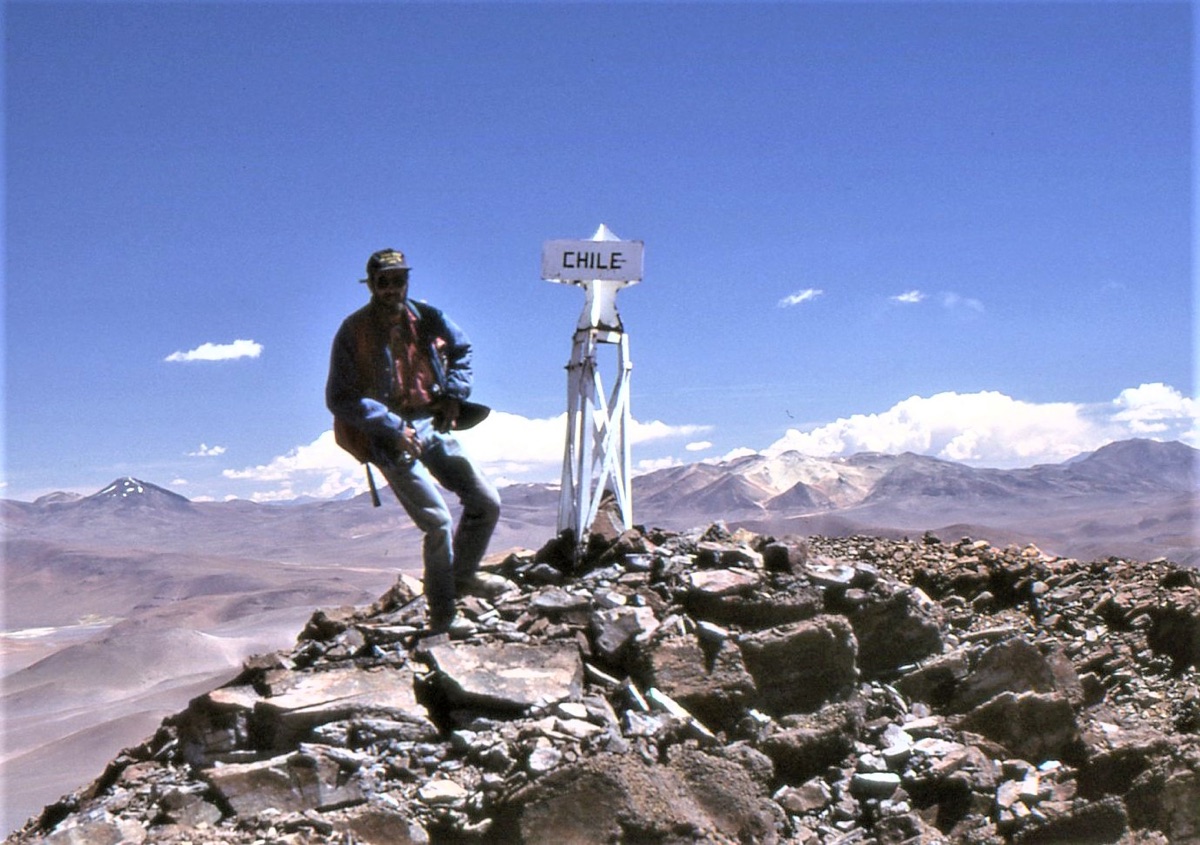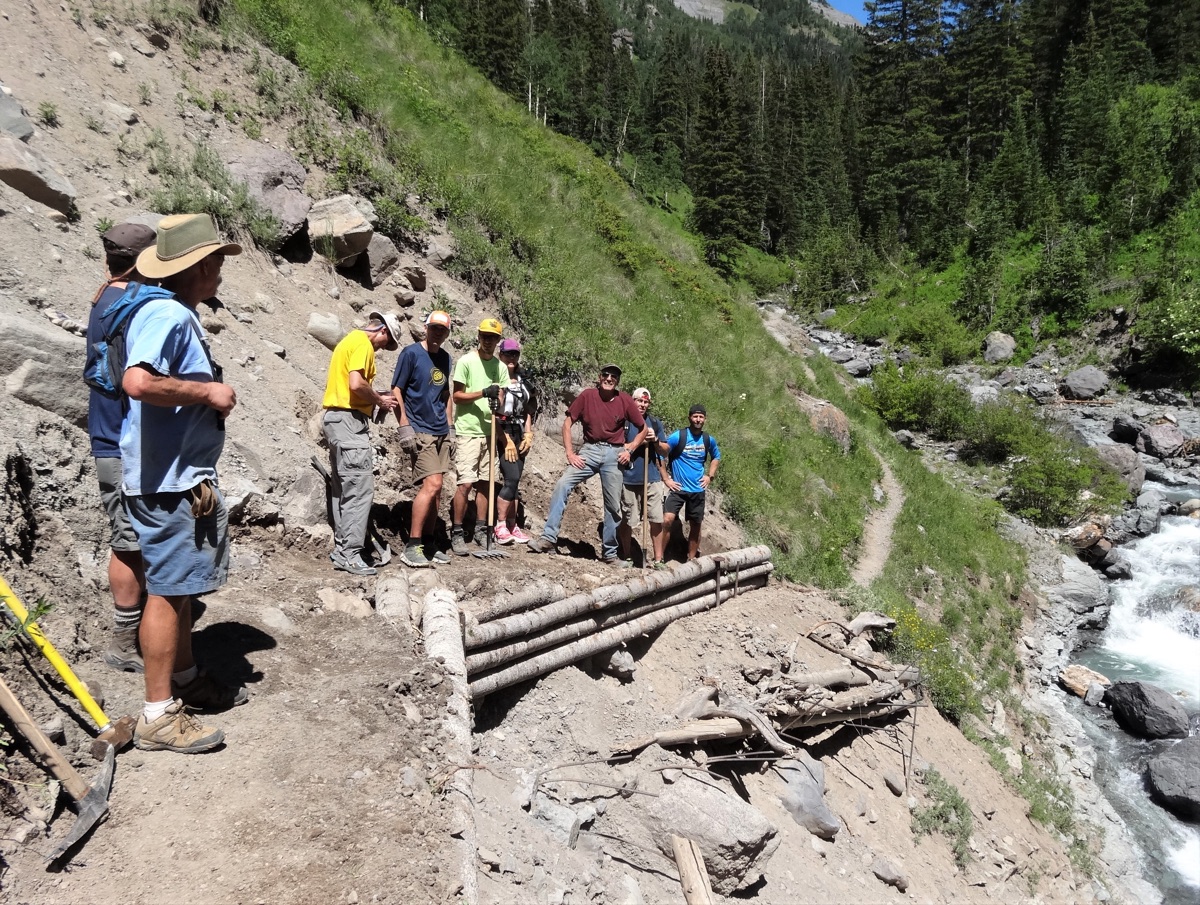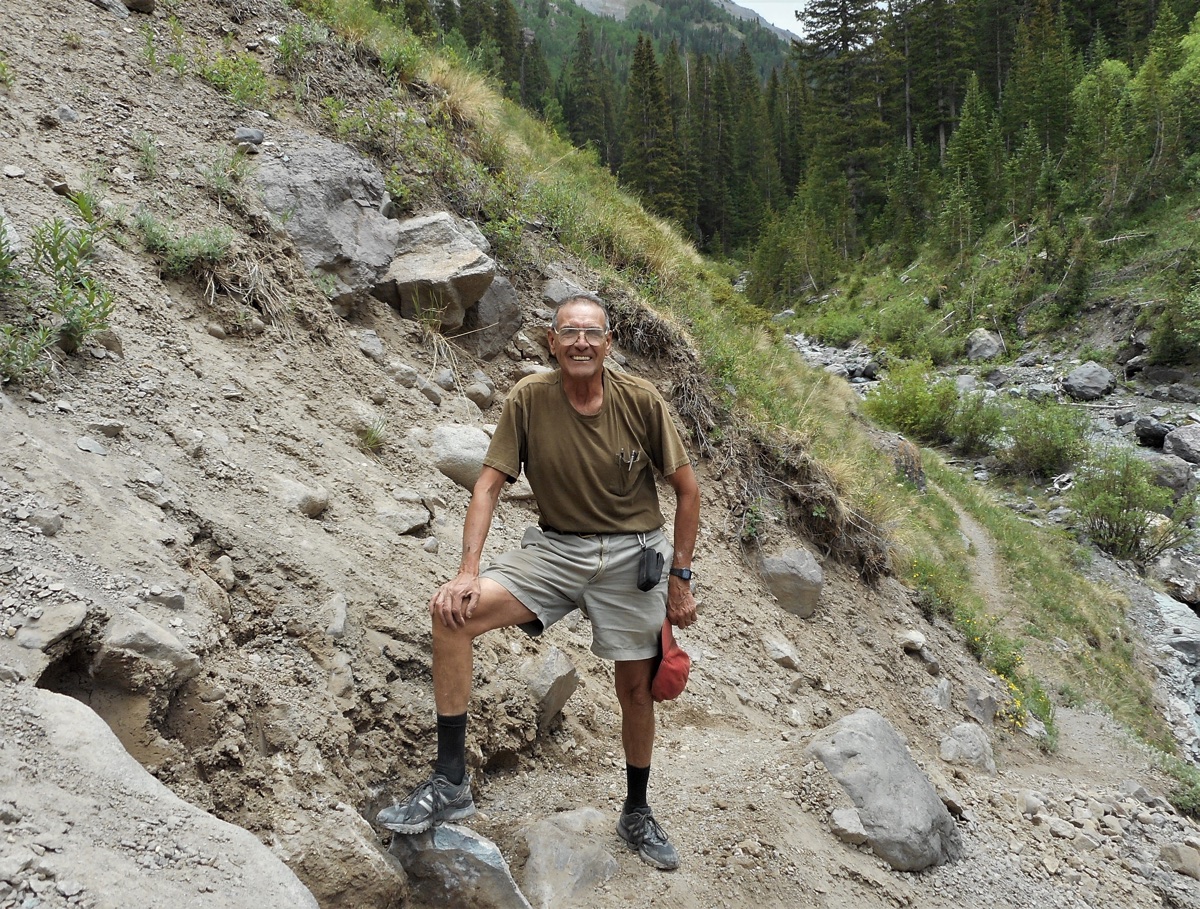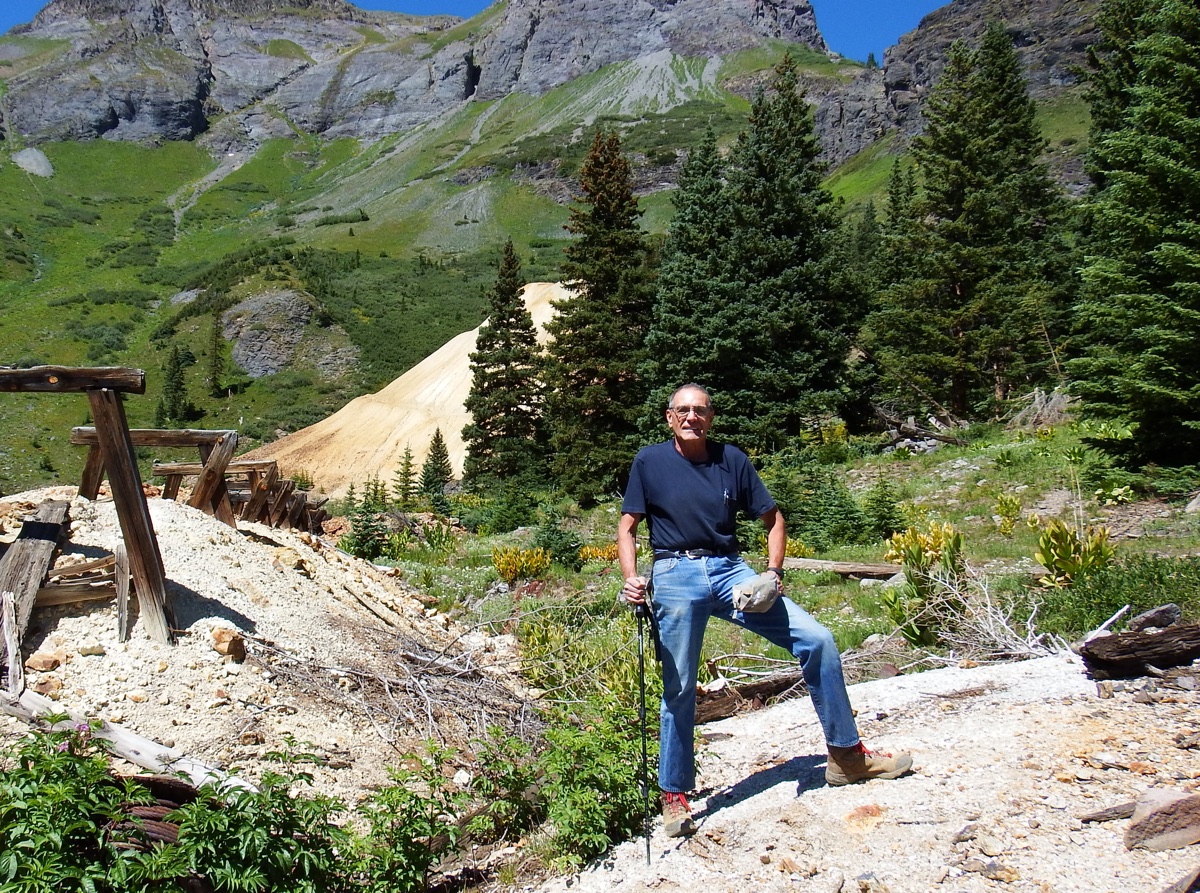Coloradan mountain runner Rick Trujillo is one of the most central figures in the pioneering era of the sport of mountain running in United States history and was inducted into the Colorado Running Hall of Fame in 2014. He is likely one of the only people alive with a mountain running diary that dates back to 1972. In the 1970s, he won the Pikes Peak Marathon five times. As an adult, he moved back to his hometown of Ouray, in the San Juan Mountains, and decided to run over Imogene Pass to Telluride, an endeavor that inspired the start of the Imogene Pass Run—an event he continues to organize and run. Soon after, he also helped to blueprint a segment of the famed Hardrock 100 through his backyard. The now 73-year-old still lives in Ouray, up the street from his 96-year-old mother, who still lives in his childhood home, at print.
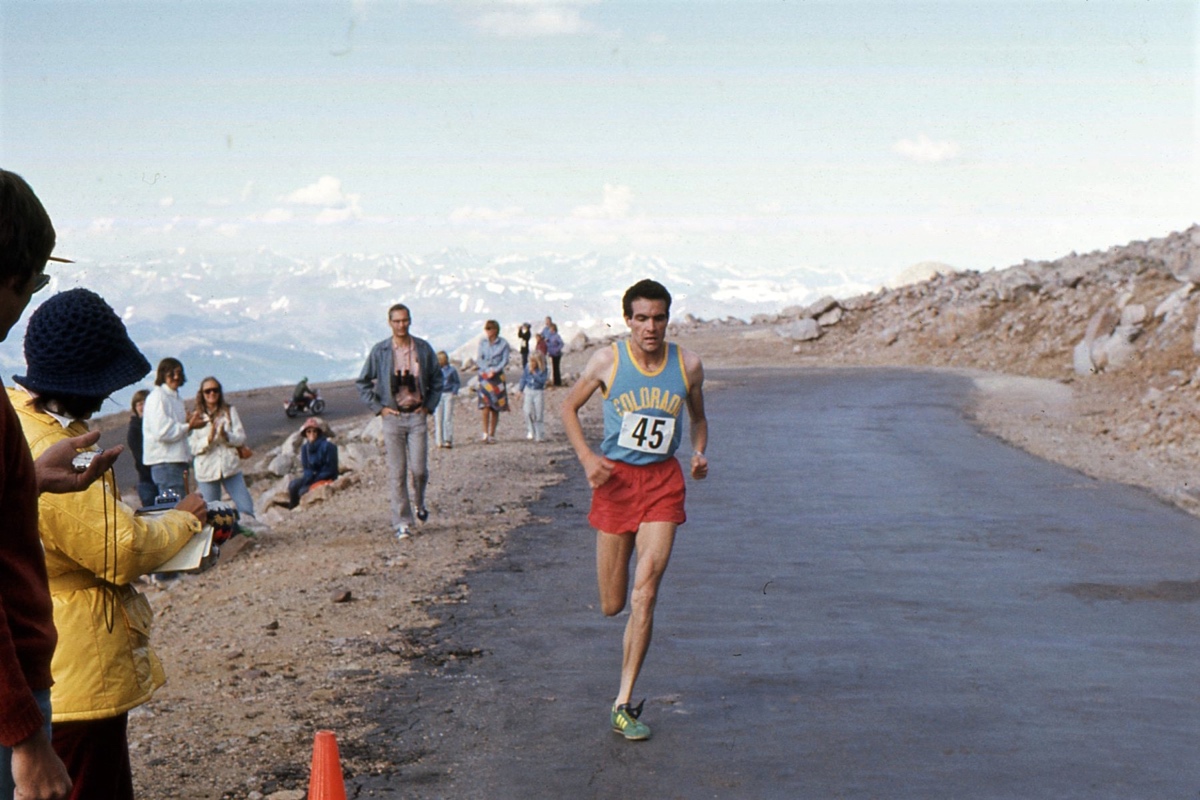
Rick Trujillo winning the 1976 Mount Evans Ascent in 1:44:24. All photos courtesy of Rick Trujillo unless otherwise noted.
Born in the Olathe farmlands, Trujillo and his family moved to Ouray by the time he was two years old. Called “Uncle Rick” by nearly 50 nieces and nephews across two generations, Trujillo grew up as the oldest of 11 siblings, 10 of which are alive. When Trujillo was growing up, the Ouray High School didn’t have a track team until the spring of 1963, when he was a 15-year-old freshman. He’d grown up hiking the rugged, steep trails that feed into Ouray, had never run, yet decided to join the track team. The first training session in March took the group up Amphitheater Road—until they hit waist-high snow, then turned back. The experience stuck.
Trujillo competed at the Colorado high school state track and field championships and was the high school state champion in the one-mile distance in B and C size schools from 1963 to 1966, his freshman to senior years. In 1964, when he was a junior, his school added a cross-country team, too. Twice in high school, Trujillo ran over Red Mountain Pass from Ouray to Silverton via U.S. Route 550 and other roads but he’d venture onto bona fide trails, too.
The 1964 Colorado high school state cross-country championships were held in Boulder, Colorado. This was his first visit to Boulder, and the Flatirons and cemented his vision to attend college at University of Colorado. His dad, who worked as a miner, supported their family, but Trujillo was only able to attend college through a cross-country and track scholarship. He also received running scholarship offers from Brigham Young University in Provo, Utah; Adams State in Alamosa, Colorado; and Oklahoma University—but the Boulder mountains called his name. Trujillo was the first person in his immediate family to go to college. He was the first student from Ouray High School to attend college on an athletic scholarship. The only other Ouray High School student, so far, to obtain a sports scholarship for running was Ray Harvey in the 1990s. The CU Boulder scholarship included tuition, fees, and half of room and board, as well as a work-study position of watering the field house each evening for two years.
Trujillo received an All-American status in cross country his sophomore year, for the 1967 NCAA cross-country championships at University of Wyoming, Laramie—which was a high-altitude nod to the then upcoming 1968 Olympics held in Mexico City, says Trujillo. He shares, “As with the coming Olympics, I remember that there were protests from low-land schools about the championships being held at high elevation. I placed seventh in the race, and my teammate Craig Runyan was fifth, making both of us All American in cross country for the year.” That was also his best performance year in college, before Achilles tendinitis plagued him for several decades. He caught the heel of a teammate during a training run while wearing spikes, resulting in a sprained ankle which developed into Achilles tendinitis due to the then required daily training.
“I didn’t really get into systematic running on steep, rough trails until after college. With a degree in geology, I wanted to travel the world—but there was no work. I got a job as a mine geologist at the Camp Bird Mine in October 1970, above Ouray. That’s when I really started running trails: the steep and rougher, the better—with more than 1,000 feet per mile,” says Trujillo. Hiking, too, continued to be a passion that blossomed into mountaineering. Over the years, he topped out on major mountains including Aconcagua in Argentina and Denali in Alaska.
Trujillo, though, excelled at mountain running and the world took notice. In 1972, he heard about the Pikes Peak Marathon and ran it the following year. He set a then course record that year, won the race five years in a row, finished it a total of eight times, and held the record for eight years. In August 1974, Trujillo decided to do a new training run along a road that had been built in 1966 over Imogene Pass between Ouray and Telluride. He asked a friend to pick him up in Telluride, in exchange for being able to drive his jeep around to explore. Upon arrival, while waiting for his Ouray friend to arrive with his jeep, Trujillo ran into a couple of local Telluride friends including Jerry Race, a runner, Nordic skier, and a pharmacologist who had opened Sunshine Pharmacy.
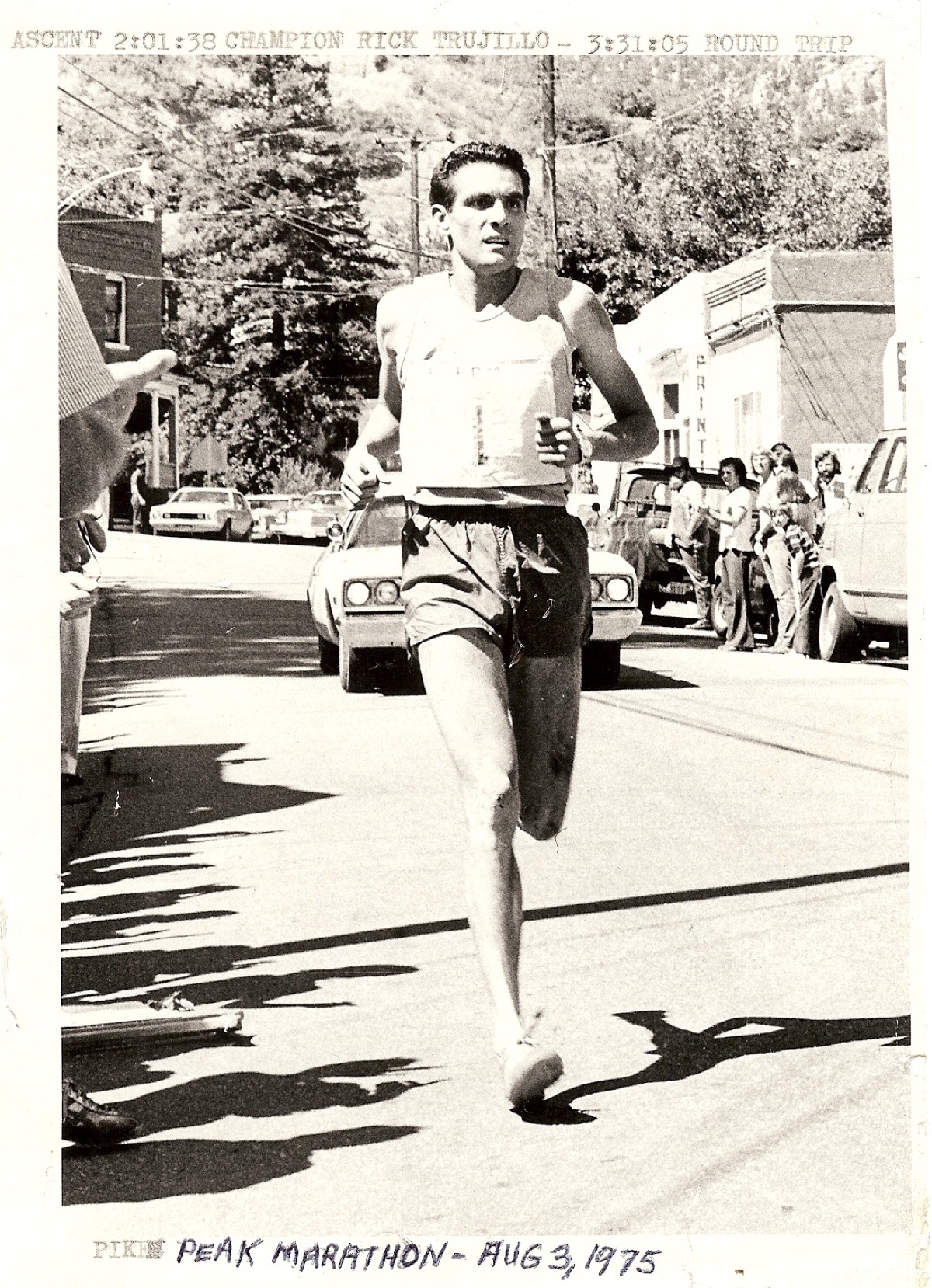
Rick winning the 1975 Pikes Peak Marathon and setting ascent and marathon PRs of 2:01:38 and 3:31:05.
“Once upon a time, Telluride was essentially unknown. No one had ever heard of Telluride except the locals in this part of Colorado. In 1974, it was a run-down mining town at end of a dead end road. Jerry Race was a businessman,” says Trujillo, “and after learning of my run over Imogene he worked with the Telluride Chamber of Commerce to organize a race over the pass, as an effort to publicize the town.” The first official Imogene Pass Run was in late September 1974 and had six runners, including him. By word of mouth, more runners showed up year after year. Trujillo was race director from 1975 to 1980. His then just beginning career as a contract exploration geologist in remote locations obligated him to turn the race management over to others for the years of 1981 to 1985. In 1985, the Imogene Pass Run nearly shut down when a snowstorm piled eight inches onto the pass mid-race. The organizers weren’t keen on the liability. In 1986, the race was incorporated and Trujillo has been the president of the board ever since. Today, the race normally has 1,200 show up to venture over the pass.

The start of the 1976 Imogene Pass Run, with Rick the farthest runner on the left and his dad Sam on the left sideline.
Back in the 1970s, Trujillo also raced the Double Dipsea, in California, which he won. He ran La Luz Trail Run, in New Mexico, and a now-ceased race in Crested Butte, Colorado, that went to the top of Crested Butte Mountain and back to Elk Avenue—which he won three times in a row. He also ran the Mount Marathon Race in Seward, Alaska: “It’s the steepest mountain run anywhere on earth—it’s downright dangerous. I did that in 1977 after getting off Denali. I was second or third to the top and on the descent, I hadn’t been training, and I had to hold back coming down. I finished sixth overall. It was held on the Fourth of July.”
He recalls an old race in Utah he ran, too. “Some of the races don’t exist anymore. I tried to get to every mountain race I knew of. I never made it to the one on Mount Washington in New Hampshire, or to Mount Baldy in California,” he says.
The Camp Bird Mine closed in 1978, and for a while Trujillo paid the bills as a carpenter. That August, he was invited to run a European mountain race in the Alps, on his first international trip ever, the Race of the Five 4,000-Meter Peaks, which is run between the towns of Sierre and Zinal in Switzerland. The route follows the high points of Weisshorn (4,506 meters), Zinalrothorn (4,221 meters), Obergabelhorn (4,073 meters) Matterhorn (4,478 meters) and Dent Blanche (4,357 meters). The race was rough. “I’d known nothing about jet lag and arrived two days before. It didn’t go well and I placed 19th,” recounts Trujillo.
By the following year, he picked up a position with American Metal Climax (AMAX), doing prospecting in the San Juan Mountains for molybdenum. “I look back now, and it was just spectacular. My job was to go anywhere and everywhere from Poncha Pass to the San Miguels to San Luis Valley to New Mexico—anywhere in the San Juan Mountains—to look for certain types of rock. Some days were long, long hikes with 14 hours of walking. Piedra Pass was one of the most spectacular, near Creede. These outcrops were mapped. I enjoyed my job,” he shares.
The molybdenum market crashed, in 1982, but more doors—or in this case, shafts—opened. Trujillo traveled all over the Western Hemisphere from Alaska to Argentina to provide insight and guidance as a mine geologist. In 1981, he worked in Chile, out of a city called La Serena, which means, the siren—as in, “the ones that lure ships to their death on rocks,” Trujillo explains. He adds, “Chile is one of only two places on earth where you can watch waves breaking on shore at sea level and six hours later go to work at 14,000 elevation: The relief is far greater than anything in Colorado.” His basecamp was at 13,700 feet and the prospect site sat above 15,000 feet. He’d go running at an elevation of more than 16,000 feet. Later, he worked on the Alaska Peninsula and in the Aleutian Islands. “The Alaska Peninsula has one of the most atrocious climates, in the sense that the wind is eternal. The rain, and the beef or pea stew fog, makes you barely able to see your feet beneath you. That’s why Ouray, Colorado, is still home. Ouray is benign compared to a lot of places I’ve worked,” says Trujillo.
In 1992, Trujillo was called upon to help develop a new race, the Hardrock 100. He joined alongside runners and adventurers Gordon Hardman, Charlie Thorn, and John Cappis to scout and measure the course. “I pushed a measuring wheel through 50 to 60 miles of the course. In early July, we arrived at the top of Handies Peak, and I was jogging and pushing the measuring wheel to the top of the trail where we surprised hikers at the summit. John Cappis, the main course designer and a Telluride native, was a scientist and wanted to make sure distances were more than a haphazard guess,” says Trujillo. In the 1990s, Trujillo finished Hardrock twice, including winning the race in 1996. First the track, then the mountains, and after that ultrarunning: Trujillo proved successful at any kind of running he did.
He continued to work at mining sites all over including in Washington, Oregon, Idaho, Utah, Nevada, and New Mexico; as well as in Chile, Argentina, Uruguay, Mexico, and Bolivia. He was commissioned as an exploration geologist to search for a variety of mineral deposits from gold and silver to diamonds and potash. “I found gold in the Alaska Peninsula but it goes into Canoe Bay, a spawning area for herring, and fishing is king in that part of Alaska. The only place I’ve seen gold sticking out of ground was in Uruguay,” he says.
On his work excursions, Trujillo carried a 2.5-pound rock pick, notebook, maps, altimeter, and compass. He worked underground, too. “The last couple of jobs I have had I was hired because of my experience in underground mines, to show young geologists how to do underground and surface mapping. I don’t know what they teach people nowadays except that now young geologists are experts in computer programs,” he says. He recently taught traditional mapping and other skills to five Bolivian geologists at a huge open-pit mine for lead, zinc, and silver called the San Cristobal Mine, in Lipez, Potosí Department, Bolivia. They communicated in Spanish, which he learned when he first worked in Chile and Argentina in the 1980s.
He’s only had one accident in the mines, but that accident almost took his life. He was working underground at Camp Bird, in late August 1973, a week or so after his first Pikes Peak Marathon win. He stood in the skip (elevator), an upright metal box attached to a cable, which transports supplies and miners. Another miner tugged the line to pull the box up—but Trujillo was in the middle of stepping out of the box. His head became pinned beneath a wood beam, his legs were still in the now ascending skip and he was being squished. His colleague felt the resistance and let go but the damage was done. He’d broken three lumbar vertebrae in his spine. Though he healed and relearned how to walk, Trujillo is now experiencing the impacts of his shattered back.
Trujillo was climbing Ojos del Salado, in 2017, the second-highest peak in the Andes, just inside the Chilean border with Argentina and the world’s highest active volcano, at 22,600 feet. “At about 21,300 feet I noticed my right leg started tightening up. I thought it was a pulled muscle of some sort. I couldn’t move my right leg without severe pain. I had no business going any further. I turned back and did not get to the top of the mountain. In August 2019, I was trying to get into shape for the Imogene Pass Run in September. I had same thing happen on a training run when my right leg tightened up again. It was serious. There were some 2.5 weeks during which I couldn’t sit down. The pain was severe, the only relief came from standing or lying flat on my back. All of a sudden, one evening, my right leg started feeling numb—right now my right foot is numb. I think it will be that way the rest of my life. I think it’s a consequence of the 1973 injury coming back to haunt me. I don’t dare push myself anymore,” explains Trujillo. His experiences indicated that he’d developed sciatica.
Trujillo organized and oversaw the Hardrock 100 volunteer trail work on all sectors of the route for nine years, from 2010 to 2018. Today, he is no longer associated with Hardrock, but continues to do volunteer work on the trails around Ouray. This spring, he took his chainsaw, pick, and shovel into Ouray’s Bear Creek Trail to dig out the singletrack at the “wash out,” a yearly task, and to cut out fallen trees at many places on the trail. As for his other philanthropy in the community, he hopes that younger leaders are ready to take his role on the board of directors for the Imogene Pass Run, soon. “I don’t have another 45 years. I plan to leave in two or three years. It’s time for someone else to pick up the baton and carry it on,” he says.
Trujillo’s desires have shifted. “I’m now retired as a roving consultant geologist, but I am still greatly curious about many geologic occurrences that I know of in my home area. In early April, I received a job offer in Anchorage, Alaska, but my perceptions and values have changed through time. Once upon a time I would’ve jumped at the chance, but I declined the job offer. I already had plans for this coming summer. Friends will be coming through town that I really want to see. Later today, I’m meeting with a geology professor from Durango to show him a volcanic ash-flow tuff unit at the base of the Amphitheater east of Ouray, so we can collect a sample to radiometrically age date the rock. Next week we will hike up the Weehawken Trail to collect rock samples from other primary volcanic units for more age dating. Next month, I’ll take a woman from Ohio up the Silvershield Trail to show her dinosaur tracks—134 individual steps—preserved in a hard quartzite bed on land owned by her family. I had known about these tracks since I was a kid in the 1950s, but with this woman’s permission, a formal study of them was finally done only this past September. One of my main goals for the time I have left—seven to 27 years—is to finish the genealogy study of my family, a project I began in 1976. My research has identified some 3,200 names, it is time to wrap it all up and publish. All this is now more important to me than working in some exotic distant place for any amount of money.”
To this day, he carries few to no regrets about following his biggest passions throughout life. Trujillo says, “Enjoy the run and the run in the environment that you’re in. For me, it’s the natural surroundings of the mountains. For some, it’s the beach or city streets. That’s how I’m programed. There are few regrets of things I’ve done.”
Call for Comments
Calling all Rick Trujillo stories! Leave them in the comments section.
